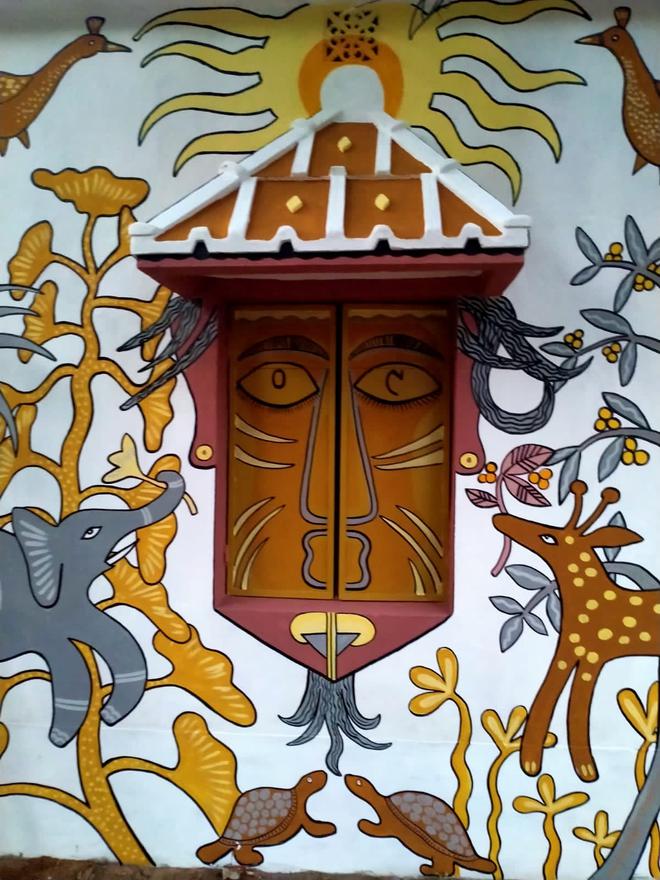Although the term workshop usually conjures images of a hotel reception teeming with attentive corporate employees, a remote village in West Bengal is about to reimagine the meaning of the word. In a four-day workshop, beginning on Saturday, residents will learn an aboriginal method of mural art from two rural women coming from neighbouring Jharkhand.
The workshop will take place in Konedoba, a village near Jhargram dominated by the Santhal tribe, where members of an artists’ initiative from Kolkata, called Chalchitra Academy, have been camping since August last year and which is organising this event for the teaching of ancient Sohrai art.
Also read: Artists’ collective to transform another Bengal village into an art hub
“The workshop will be conducted by esteemed artists Anita Devi and Sajwa Devi. It aims to celebrate and preserve the centuries-old artistic heritage of the Hazaribagh region. Hazaribagh, which means ‘land of thousand gardens’, is an enclave of India’s rich tribal cultures, housing communities such as Munda, Santal, Oraon, Agaria, Birhor, Kurmi, Prajapati, Ghatwal, and Ganju,” said artist Mrinal Mandal of Chalchitra Academy, who has been living around Jhargram since 2018, enchanted by its beauty and teaching art to villagers.

“Unknown to many, the women of Hazaribagh have been adorning their homes with Sohrai paintings, drawing inspiration from ancient cave paintings discovered in the region. These artistic expressions serve as a vibrant display of flora and fauna, transforming villages into captivating gardens while preserving cultural values and traditions,” Mr. Mandal said.
Mr. Mandal, who, since 2018, has spent most of his time in a village called Lalbazar, taught art to its residents, inspiring them to fill their walls with artwork and to make handicraft. Once poverty-stricken, the village is today a tourist attraction and has earned the sobriquet of Khwaabgaon, or dream village. With the help of Chalchitra Academy, he now wants to transform Konedoba into another Khwaabgaon.
Sohrai painting is practiced by indigenous communities, particularly in the States of Jharkhand, Bihar, Odisha, and West Bengal, but it is the region of Hazaribagh in Jharkhand that has received the GI tag for this art form. It is the art of the women of the Kurmi, Santal, Munda, Oraon, Agaria, Ghatwal tribes. Sohrai paintings are distinctive for their vibrant colours, intricate patterns, and symbolic motifs; and there is a Sohrai festival held every year, marking the harvesting season and the arrival of winter.







